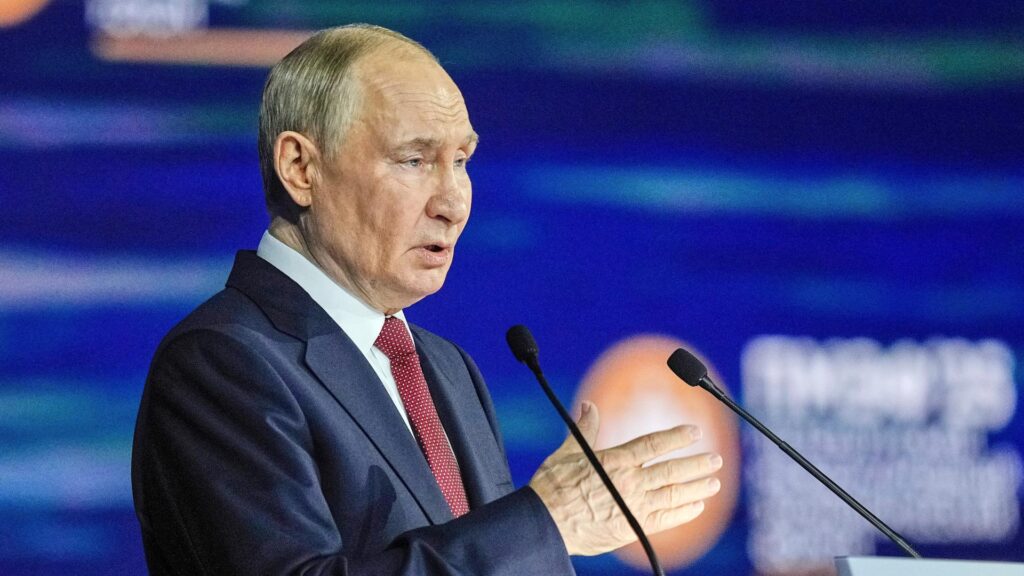Putin’s Address at St. Petersburg Forum: Navigating Geopolitical Challenges and Strategic Alliances
Strengthening Ties with Iran Amid Global Pressures
At the recent St. Petersburg International Economic Forum, Russian President Vladimir Putin underscored the deepening alliance between Russia and Iran, emphasizing their growing cooperation across military, economic, and energy sectors. This partnership is portrayed as a strategic countermeasure against Western sanctions and NATO’s continued expansion toward Eastern Europe. By intensifying trade relations and defense collaboration, both countries aim to fortify their sovereignty while mitigating external economic pressures.
Energy security remains a cornerstone of this alliance; Iran’s oil production capacity is increasingly vital in addressing global supply shortages exacerbated by geopolitical disruptions. According to the International Energy Agency (IEA), Iranian crude exports have seen a modest uptick in recent months despite sanctions, highlighting Tehran’s role in stabilizing energy markets alongside Moscow.
The Ukraine Conflict: Russia’s Firm Position on Territorial Integrity
Putin reiterated Russia’s steadfast commitment to preserving its territorial claims amid ongoing hostilities in Ukraine. Rejecting current calls for negotiations without preconditions, he framed Western support for Kyiv as an attempt to diminish Russian influence across Eurasia. This stance not only intensifies military tensions within the region but also threatens broader economic stability worldwide.
The Kremlin views its partnership with Iran as essential for navigating what it perceives as an increasingly adversarial international environment—a dynamic that contributes to a complex geopolitical matrix extending well beyond regional borders.
NATO Expansion: Implications for European Security Architecture
Addressing NATO’s growing footprint in Europe during his speech, Putin characterized the alliance’s eastward enlargement as a direct threat necessitating enhanced Russian military readiness. He described this perceived encirclement as justification for bolstering defense capabilities and forging stronger ties with non-NATO neighbors.
This evolving security landscape presents significant challenges for European Union members striving to maintain unity amid escalating tensions:
- Augmented Defense Investments: Several Eastern European NATO members are increasing troop deployments along their borders—Poland recently announced plans to expand its eastern forces by over 10% this year alone.
- Expanded Partnerships: Cooperation with partner states like Ukraine continues through training programs and military aid aimed at enhancing resilience against potential aggression.
- Diplomatic Balancing Act: Maintaining open channels of communication while preparing defensive measures remains critical to preventing further escalation across the continent.
| Country | NATO Status | Recent Military Developments |
|---|---|---|
| Poland | NATO Member | Troop increases along eastern frontier; new missile defense systems deployed |
| Ukraine | NATO Partner Nation (Non-member) | |
| NATO Membership Applicant | Expanded joint drills & intelligence sharing initiatives; td > tr > |
| Partner Nation | Primary Focus Areas | Expected Outcomes |
|---|---|---|
| Iran | Energetics & Defense Coordination | Sustained oil market stability coupled with coordinated military initiatives |
| Bielorussia (Belarus)< td>Economic Trade Enhancement & Border Security Strengthening | Diversified trade routes plus fortified frontier control | |
| Syria | Civil Reconstruction Efforts & Counterterrorism Operations Coordination | Larger regional stabilization supported by shared intelligence networks |
A Final Perspective: The Broader Impact of Putin’s Forum Address
The insights delivered by President Vladimir Putin at the St Petersburg International Economic Forum offer valuable context into Russia’s current foreign policy trajectory amidst mounting global uncertainties.
His emphasis on reinforcing ties with Iran signals Moscow’s intent toward building resilient alliances capable of weathering Western-imposed constraints.
Meanwhile,the firm position regarding Ukraine underscores ongoing prioritization of territorial sovereignty despite international diplomatic pressures.
Moreover,the pointed critique directed at NATO expansion reflects enduring concerns about shifts within Europe’s security architecture —concerns likely influencing future diplomatic engagements.
As these discussions reverberate through international policymaking circles,the unfolding dynamics will remain pivotal indicators shaping global power balances during this era marked by heightened rivalry,and complex interdependencies among major actors worldwide.

